 Hope everyone had a great weekend! I spent a night on the Vineyard, had a wedding shower on the Cape, and then headed back to Boston Saturday evening to finish up a fun weekend. Summer is the best.
Hope everyone had a great weekend! I spent a night on the Vineyard, had a wedding shower on the Cape, and then headed back to Boston Saturday evening to finish up a fun weekend. Summer is the best.
Since there seemed to be a lot of interest around the runner’s assessment I had done at the Micheli Center a couple months ago, I thought I’d spend some time going over other ways you can spot muscle imbalances. The NASM personal trainer certification course spends a lot of time on this since knowing your personal weaknesses is crucial for effectively training to correct them. It won’t replace having a professional assess you, but an overhead squat test is something you can do right at home or the gym to get a general idea of which muscle groups need strengthening and where you should be spending extra time stretching.
How to Do an Overhead Squat Assessment
Start standing with feet shoulders-width apart, toes pointed straight ahead. It’s best to do this barefoot (sorry, totally spaced out when taking the pictures). Raise your arms overhead with elbows extended and palms facing forward. 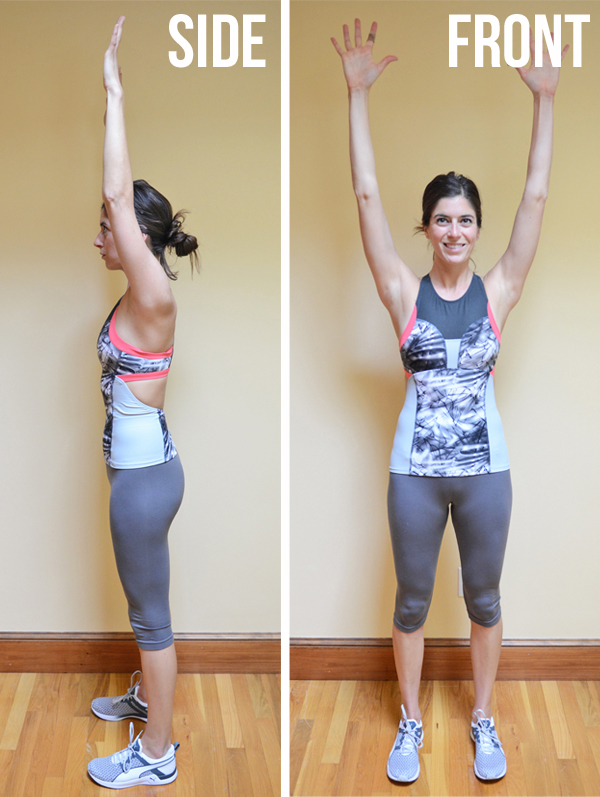
From this starting position, squat down to about chair height. Hold the bottom position while a friend takes a picture of you from the front and side. Repeat this a couple of times so that you have a good representation of what your form looks like at the bottom of the squat. You could do this in front of a mirror as well, but seeing your side form might be a little tricky. 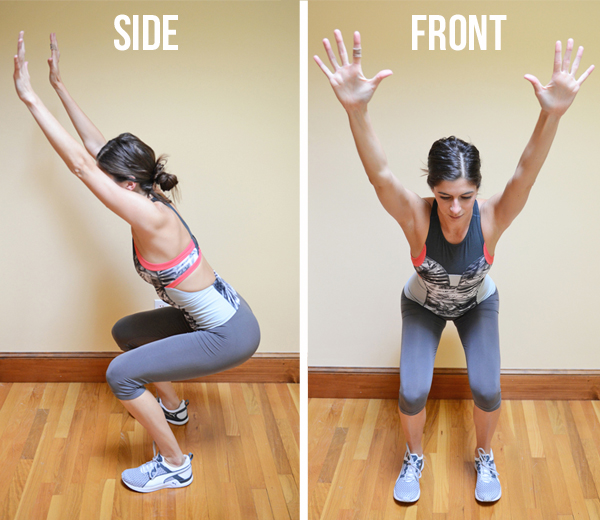
STOP READING HERE IF YOU’RE GOING TO DO THE ASSESSMENT ON YOURSELF. If you read all the details on how to and not to do the squat, it’ll be hard to see what your body naturally does because you’ll be overthinking everything. Go have a friend take a picture from the front and side of you doing the squat and then continue reading and compare the pictures.
What to Look for: Front View
I’ve tried to include a general description of where some of the less-familiar muscles are located, but if you’re unsure of any, just ask me in the comments or get your Google on (seeing anatomy pictures is the most helpful in understanding where these muscles are attached in the body).
Correct Form
From the front, you should pay close attention to the lower body alignment. The feet should remain straight and the knees should track in line with the foot. 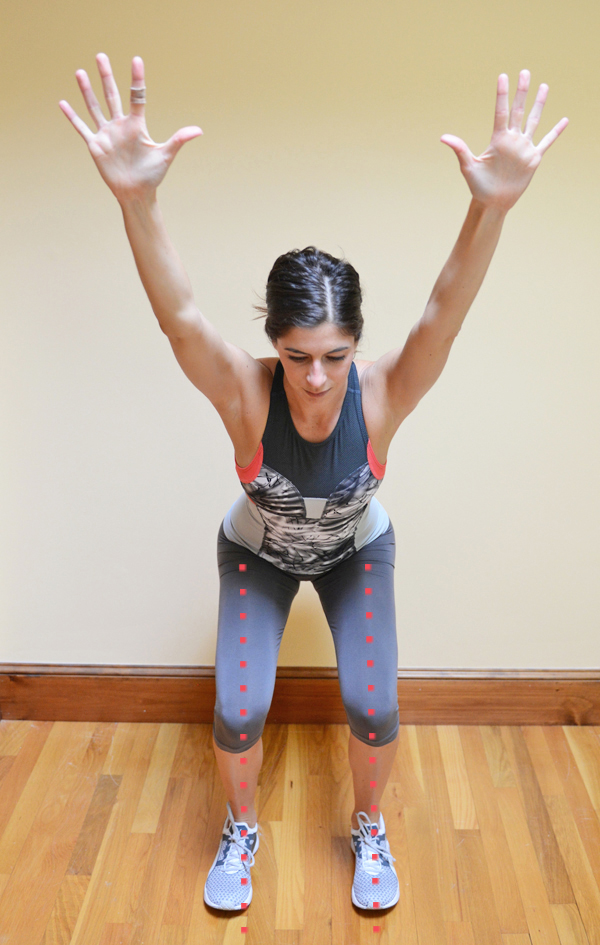
Form Compensations + What They Mean
From the front, observe if the knees move inward and if the feet flatten and/or turn out to the sides. As you read through the ways our body compensates for imbalances, keep in mind that overactive (tight) muscles need to be stretched (SMR with foam roller or tennis ball, static stretching, etc.) and underactive muscles need to be strengthened. You can’t effectively stimulate the underactive muscles if range of motion is restricted, so it’s important to spend time stretching tight areas in addition to building up strength.
Knees Move Inward (Knock Knees) 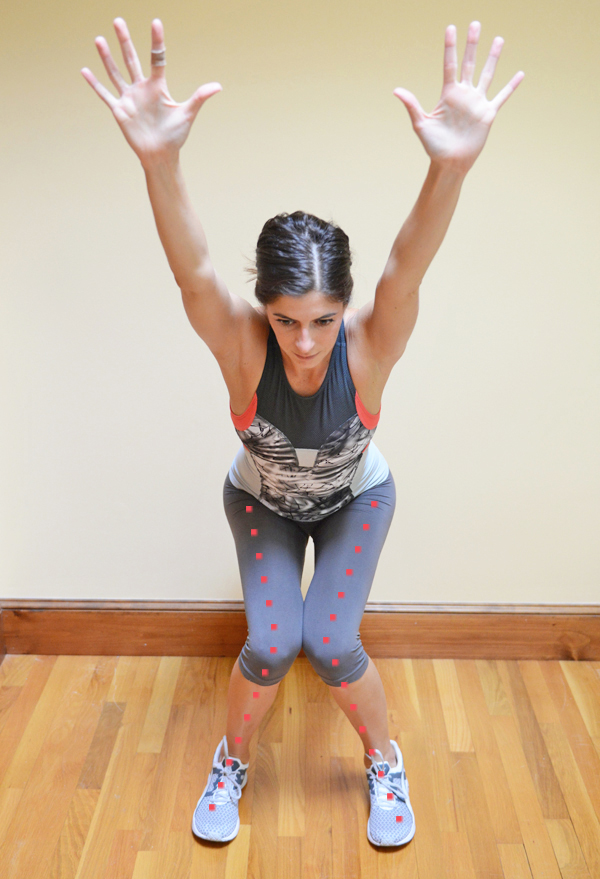
- Overactive muscles: adductors, TFL, biceps femoris-short head (backside of the knee/hamstring), vastus lateralis (front/outside of quads)
- Underactive muscles: glutes (medium/maximus), vastus medialis (front quad/top of knee)
Feet Turn Out and/or Flatten 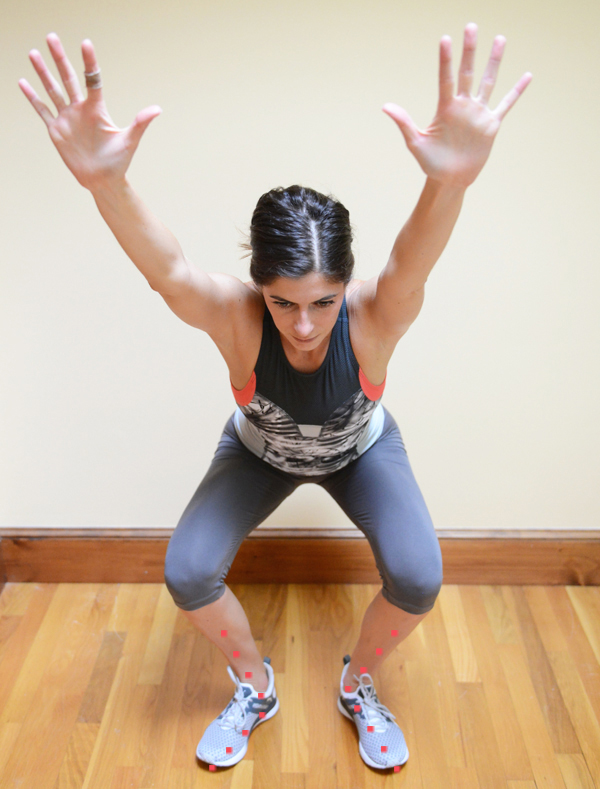
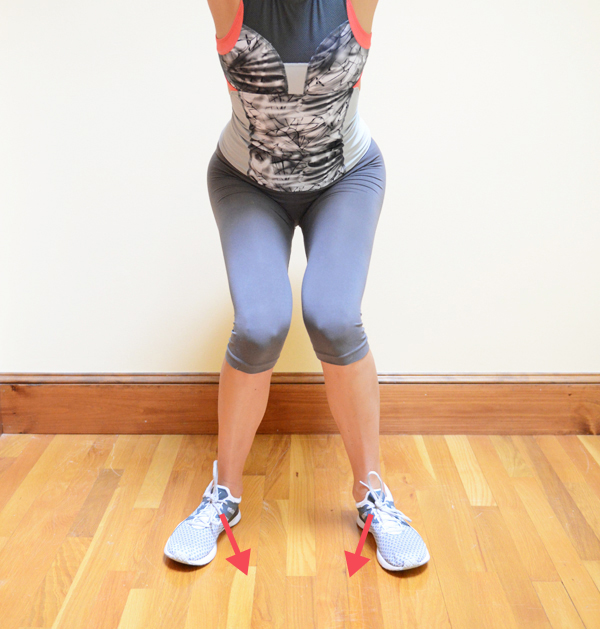
- Overactive muscles: soleus & lateral gastrocnemius (calf), biceps femoris-short head (backside of the knee/hamstring)
- Underactive muscles: medial gastrocnemius, medial hamstring complex, gracilis & sartorius (wrap on the inside of the thigh/knee from pubis to tibia), popliteus
What to Look for: Side View
Correct Form
The arms should stay in line with the torso. The tibia (shin) should also stay in line and parallel with the torso. 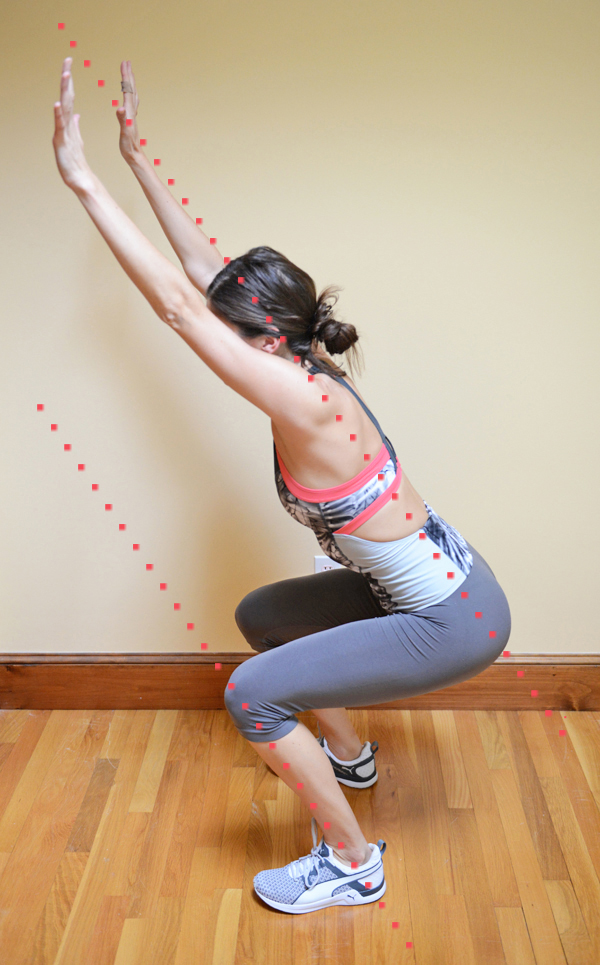
Form Compensations + What They Mean
Low Back Arches 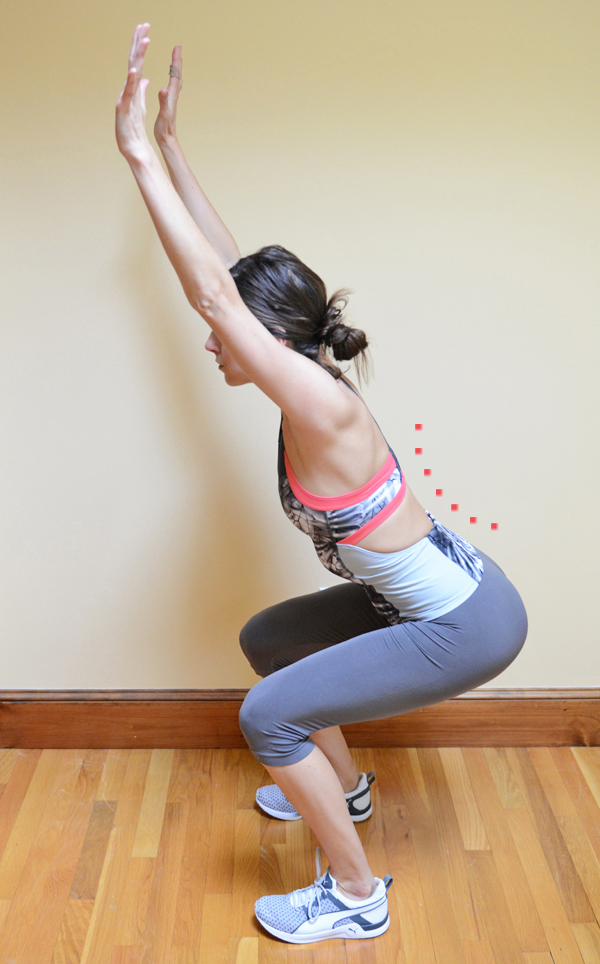
- Overactive muscles: hip flexor complex, erector spinae (muscles along the spine), latissimus dorsi
- Underactive muscles: gluteus maximus, hamstring complex, intrinsic core stabilizers (transverse abdominis, multifidus, transversospinalis, interval oblique, pelvic floor)
Forward Lean 
- Overactive muscles: soleus & gastrocnemius (calf), hip flexor complex, abdominal complex
- Underactive muscles: anterior tibialis (front-outside of shin), gluteus maximum, erector spinae
Arms Fall Forward 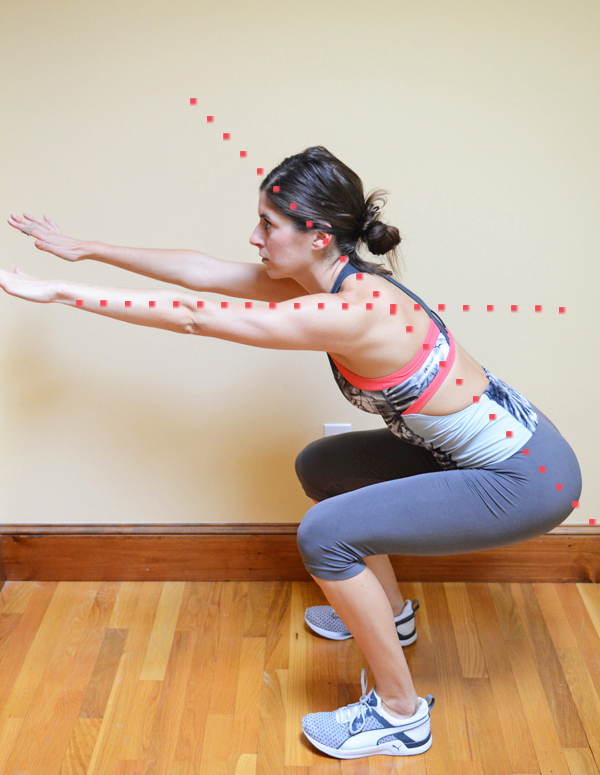
- Overactive muscles: latissimus dorsi, teres major (backside of armpits), pectoralis major/minor
- Underactive muscles: med/lower trapezius, rhomboids (in between shoulder blades/upper back), rotator cuff
So again, in order to effectively strengthen the underactive muscles, you need to spend time stretching and releasing the overactive ones. If, for example, you have an overactive, tight TFL, it’s going to inhibit you from effectively firing up your hamstring and glutes. It’s all connected!
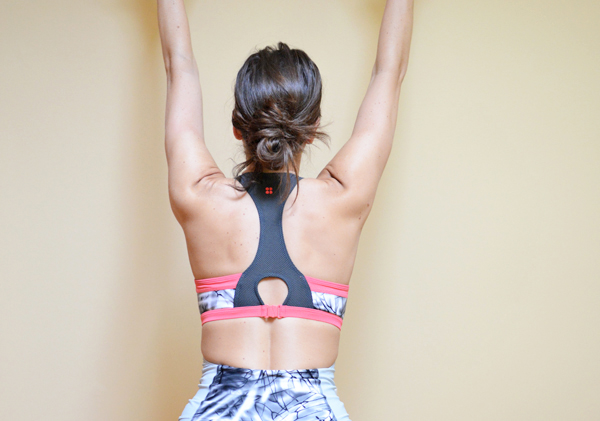 WEARING | tank c/o Sweaty Betty // leggings: Champion // sneakers: c/o Puma
WEARING | tank c/o Sweaty Betty // leggings: Champion // sneakers: c/o Puma
And before I end, isn’t this top cute?! Confession: it’s actually a bathing suit. My friends at Sweaty Betty sent it to me and I love it but don’t think I’d realistically wear it to the beach because I’m a big “if you can’t tone it, tan it” believer when it comes to my midsection (LOL). Luckily, thanks to my small boobs, I think it totally passes as a workout tank for low-impact stuff like yoga, Pilates & barre. That’s what I’m telling myself anyway…
Alright–happy squatting! If you try out the assessment, let me know what you notice about how your body compensates for existing muscle imbalances. 
SHOP A SIMILAR LOOK:
Info in this post was learned during my PT training through NASM. This is the textbook I used for reference.








Ha I just passed my NASM exam a couple weeks ago so I totally know all the over and underactive muscles for this. Good to share though!
Congrats on passing! Woop!
My overhead squat is not pretty — tight shoulders, holy moly!
Ah, this is such a great “assessment”: to do!
Awesome post! I have tested imbalances in squats with training clients, but I really think you did a fantastic job here of guiding people how they can do this for themselves through taking pictures and analyzing them.
Thanks for the tips! Turned out I’m a tipical forward leaner. 🙂 So I have some muscles to work a bit…
PS: I don’t know, whether it’s my computer’s fault or what’s the problem, but choosing the full-body workout category doesn’t work (for me at least)…I get a ‘fatal error’ message every time I try it. I know it’s not a huge inevitable mistake but I just wanted to let you know. 🙂
The problem should be all fixed–but thanks for letting me know! That dang page has been giving me trouble for a couple months now. 🙂
What an awesome article! I know my squat “has problems” and this totally explains things thank you so much!
Are you experiencing pain ? Often poor squat positions can build up over time to produce some pretty bad over use issues. Scoliosis and sciatica are two that I have experienced !
A tip to stop your knees falling ‘in’ and ‘out’ is to get a resistance band and tie it into a loop that is about as wide as your shoulders. Then step into the band and place it just above the knee and squat with resistance.
The band will provide resistance so your knees become aligned preventing pesky lwer back and knee problems. Hope that helps !
Great post! I’m looking forward to trying this.
As a physical therapy student, this was a fun read! 🙂 Love this workout outfit too!
Amanda
XO Strawberry Chic
I always wonder YES or NO for any form of warming-up before assessments! Thank you
It’s a nice article, I read it another time, which raised another question. What is your opinion (or NASM’s for that matter) on the fact that there are different bone structures and connections (e.g. femur placement in hip). So why need the feet to be straight forward? 🙂 There might be a limitation not caused by any muscle, tendon or tightness….
Nice one. I’m a human movement specialist. Follow me at edufit.training.sportstherapy on instagram.
Wonderful resource! Thanks for sharing!
A new client/patient just walked into your facility. You conducted your brief history interview and did not have any significant findings. The following assessments were performed: postural assessment, overhead squat, and lunge test. The following observations were made:
1) Left heel elevated when performing the overhead squat, trunk forward lean.
2) Bilateral heels of the front leg elevated while performing the lunge test.
3) Excessive lumbar lordosis from the postural assessment.
Based on your observations:
– What are the possible implications (i.e. what’s causing it)?
– Which corrective exercises can be implemented?
– What exercises can be performed to reinforce the correction and strengthen the deficiencies? Use 2 outside sources to support your findings. NEED HELP